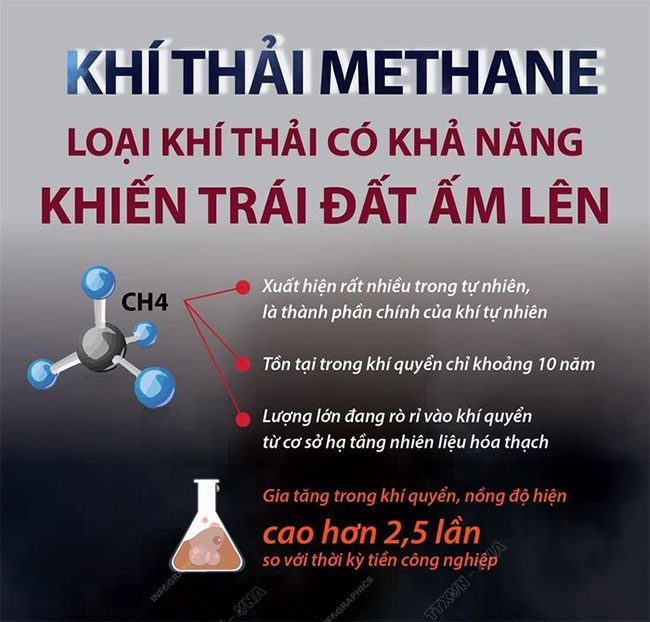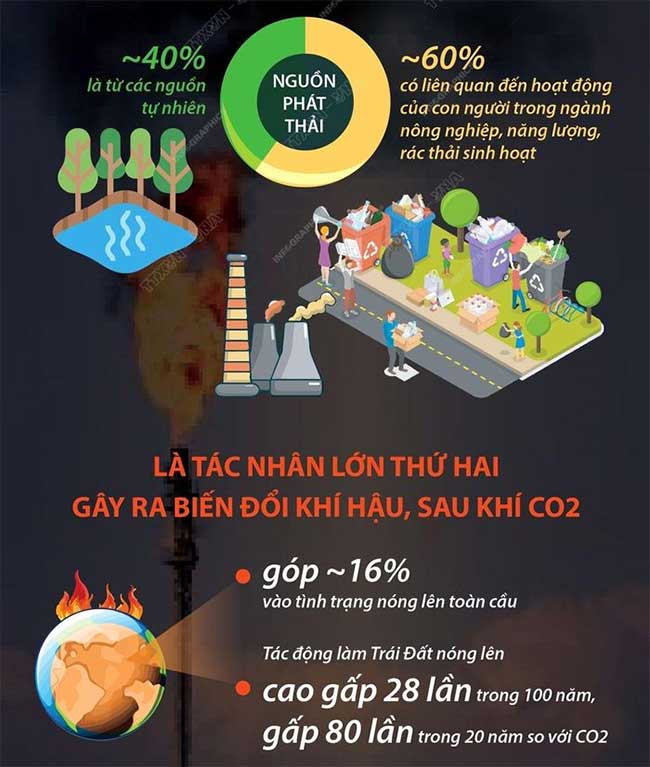Discussions about climate often revolve around reducing CO2 – the most dangerous greenhouse gas.
Methane is a chemical compound with the chemical formula CH4 (one carbon atom and four hydrogen atoms). It is a group 14 hydride and the simplest alkane, serving as the main component of natural gas. The relative abundance of methane on Earth makes it an attractive fuel source, although capturing and storing it presents challenges due to its gaseous state under normal temperature and pressure conditions.
Naturally occurring methane can be found both underground and beneath the seabed, formed through both geological and biological processes. The largest methane reservoirs are located under the seabed in the form of methane clathrates. When methane reaches the surface and enters the atmosphere, it is referred to as atmospheric methane.
However, methane (CH4) is also another type of emission that has the potential to warm the Earth. Methane is a key target for nations looking to quickly cut emissions and slow down climate change. This is due to the large volumes of methane leaking into the atmosphere from fossil fuel infrastructure.





















































